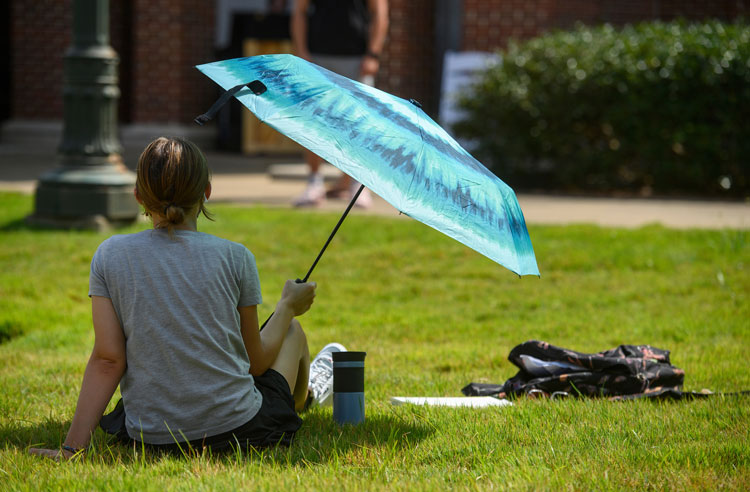
Dr. Hubert Spears provides helpful tips for summer months
As summer approaches, so does the time to focus on skin cancer prevention, says University of Mississippi Health Services physician Dr. Hubert Spears.
May is Skin Cancer Prevention Month, which raises awareness of America’s most common cancer. More than 5 million cases are diagnosed in the U.S. each year, according to the Skin Cancer Foundation.
“One in five Americans develop skin cancer,” Spears said. “Rates of the deadliest form, melanoma, have been rising over the past decade.”
Thankfully, skin cancer is one of the most preventable cancers and “highly treatable, especially when caught early,” he said.
To identify any concerning moles or spots that could progress to cancer, he recommends regular self-checks and annual skin exams. You can do that by looking for the ABCDEs, which are:
- Asymmetry, or one side of the mole is mismatched from the other
- irregular Borders, where the edges of the mole are ragged, notched or blurred
- changes in Color, such as brown, black, red or blue
- Diameter over 6 millimeters, which is about the size of a pencil eraser
- Evolution in appearance, or the mole is changing in size, shape or color over time.
“Any one of these characteristics should prompt a biopsy, so be sure to get them checked out by a medical professional.”
Also, watch out for “ugly ducklings,” Spears said.
“Sometimes melanomas don’t fit the usual criteria but still need to be biopsied,” he said “Sometimes they are red and not brown. So, if the lesion looks totally different from all the other moles and freckles that the patient has noticed for years, it should be biopsied.”
Certain groups face higher risks, such as people with fair skin, lots of moles, family history or previous skin cancer, Spears said. Those with darker skin have a lower risk but may develop skin cancers in areas such as the palms, soles of the foot and underneath nails.
Skin cancer prevention is relatively simple, he said. Wearing protective clothing, such as long-sleeved shirts, pants and hats, as well as applying broad-spectrum sunscreen when going outdoors are easy ways to protect the skin against ultraviolet rays.
It’s equally important to avoid tanning beds, as they emit the same harmful UV rays as the sun, he said.
Not all sun exposure is harmful; some exposure helps the body produce vitamin D, which plays a role in bone health, calcium absorption, inflammation reduction and immune health, Spears said. However, only 10 to 30 minutes of exposure per day accomplishes this.
“Eating vitamin D-rich foods or taking a vitamin D3 supplement can ensure that the body gets enough without excessive sun exposure,” he said.
Spears advises that as the weather warms up, make skin cancer prevention a priority.
“Do regular self-checks, get your annual skin exam and take steps to protect your skin,” he said. “Being proactive can help catch any issues early and keep your skin healthy.”
By Erin Garrett






